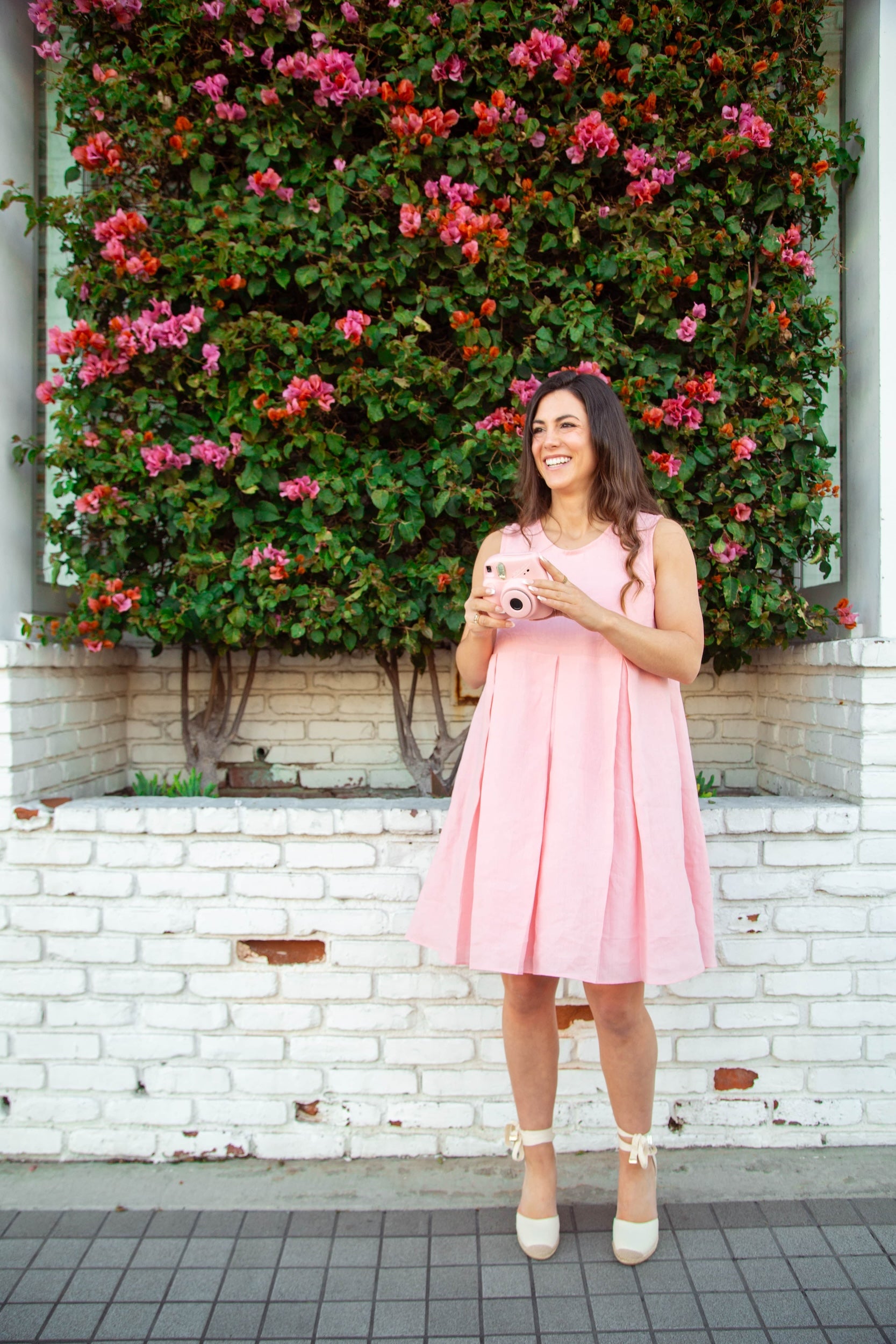Queen’s Gambit: Fashion History, Design, and Sustainability Analysis

Hi everyone, it’s Emily!
Today I want to dive into the topic of fashion history and how it is reflected in one of my favorite series on Netflix, "Queen’s Gambit". I know there have been quite a few bloggers that have talked about the fashion history related to this series, so I’d like to add to that information that’s already been covered by discussing how you can use fashion history and utilize it in fashion today.
So let’s get started by covering a few key outfits that Beth wears and then discuss the takeaways!
Outfit #1: Plaid Pinafore
If you haven’t seen the show, Queen's Gambit follows the life of an orphan chess prodigy, Elizabeth (Beth) Harmon, during her quest to become the world's greatest chess player while struggling with emotional problems, drugs and alcohol dependency in a male dominated sport throughout the 1960s.

One of the first outfits Beth wears when entering the orphanage is her plaid pinafore. Quick note here- Plaid is used several times throughout the series to reflect the chess board. In the beginning, Beth is not a super trendy 1960s girl. Throughout the show, we see her use her winnings to upgrade her wardrobe and become more on trend with the times.
Her hair changes from a pixie cut with micro bangs when during this time voluminous hair accessorized with barrettes and headbands was very much on trend, so we can conclude she is not at the forefront of trends during this time. We see her hair evolve later in the series to a Natalie wood inspired cut.

Outfit #2: Green and Black Shift Dress

Another look I’d like to mention is when we see Beth very disheveled and headed to a chess match. The dress she is wearing is inspired by Pierre Cardin. Pierre Cardin designed modernist, space age aesthetic dresses with wool or thicker fabrics, which give dresses the trapeze shape that is very characteristic of the 1960s. The trapeze dress is so timeless and one of my personal favorites looks. He is also known for his avant-garde style, including his bubble dresses. He preferred geometric shapes and motifs often ignoring the female form.

There is a bow at the neck that conveys femininity which plays into the theme of Beth being a female amongst many male players The dress is pale green with black accents. Another quick note here- Beth wears a pale green shade when she is entering the orphanage and also when she plays in matches to make her stand out against the darker set, whereas when she wears that color at the orphanage she blends in.
That light green color was considered a hospital green during the 60s and was said to help with a patient's mood and was often associated with asylums as well. There’s even more symbolism with contrasting colors on the dress that mirrors the pills that she was addicted to.

Outfit #3: White Queen
The final look after she wins the final competition is an all white coat, hat and pant. The look is meant to mirror a White Queen chess piece.

This all white queen ensemble was inspired by Andre Courreges. Many of the coats throughout Queen's Gambit seem to be inspired by Courreges. Andre Courreges also designs space-age fashion which coincided with the Apollo space program during this time.

The white pants are also a reference to Courreges, as white suits were one of his signatures. Her white coat is made from a thick cashmere wool with a stand up collar and three big buttons. I love the tie belt in the back which cinches the waist but in the front keeps an A line silhouette.
Beth wears a black turtleneck underneath it which hints at the Beatnik movement during this time. The Beatnik movement came from post-war years when some Americans began to reject mainstream ideals, dissatisfied with their unexciting lifestyle. A radical shift started to spread through art, literature, and music, led largely by influential creative and intellectual types such as The Beatles. Inspired by this group of anti-conformist people who had been “beaten down” by mainstream society, the time period was coined the “Beat Generation'' by American novelist Jack Kerouac.

Beatniks wore roll necks, wide legs, skinny jeans, and striped shirts, black jacket, loafers, and berets.
Design, Style, and Sustainability Takeaways
Attention to detail and color are so important. These two things help to tell a story. Although we are talking about fashion history and costume design, we can use these ideas in fashion design and style today. The A line silhouette, color blocking, use of basics and neutral colors, and high quality fabrics are all elements of Beth’s wardrobe throughout the series. I love how she is always dressed appropriately. She doesn’t show up to her chess match in Lululemon leggings. She wears stunning wool dresses, and she commands the attention of the room. She dresses professionally at times when today we wouldn’t necessarily dress up, which is very typical of the 1960s. She exudes confidence.
From this series and studying the fashion in it, we can also learn what is considered to be timeless and how valuable timeless looks are. You see her use scarves creatively, mix prints, utilize long structured coats, shift dresses, and turtlenecks to embody class, elegance, and timeless beauty.

Many of the outfits Beth wears could be worn today and would not be considered outdated. In fact, they are very elegant looks. From the number of people who have enjoyed the costumes from this series, we can conclude that the fashion is something people would wear today.
This information is valuable from a designers perspective. Not only from a business point of view (because of course we want to make things people want and will buy) but also from a sustainability perspective. We should strive to make clothing that lasts. Not something that we wear once and throw out. Can you imagine if we continued to make those timeless styles that were worn in the 1960s up until today? You could possibly have the same wardrobe for decades and still be elegant!
That’s all I’d like to cover today! Comment below if you’d like me to do more videos/blogs on fashion history and/or costume design. Let me know if you have any questions or specific topics you’d like me to cover, and don't forget to check out my collections here :) Subscribe to my channel and click the bell to get notified when I upload new videos every Friday!
Watch the full YouTube video here:
What to watch next?
Watch my video on the Making of my Eloise Dress:
Watch my video on How to Make a Fashion Portfolio
Watch my video on How to Unlock Your Creativity
Watch my video on How to Find Inspiration
Watch this video on How to Design from a Mood Board
Find me on:





